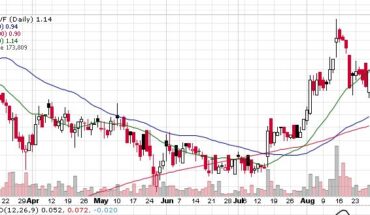SunHydrogen INC. (OTCMKTS:HYSR) filed 10k for year ending June 2020 after market hours today.
SunHydrogen INC. (OTCMKTS:HYSR) closed down slightly Wednesday to .1025. The 30 day average trading volume is 26 million shares a day. Potential pivot points to keep an eye on for HYSR are .108 and .15 above and .099 and .087 below.
10k Highlights:
Overview
At SunHydrogen, our goal is to replace fossil fuels with clean renewable hydrogen.
Our patented low-cost technology is intended to produce renewable hydrogen using sunlight and any source of water, including seawater and wastewater. Unlike non-renewable hydrocarbon fuels, such as oil, coal and natural gas, where carbon dioxide and other contaminants are released into the atmosphere when used, hydrogen fuel produces pure water as the only product. By optimizing the science of photoelectrolysis at the nano-level, our low-cost nanoparticles mimic photosynthesis to efficiently use sunlight to split water molecules into renewable hydrogen. Using our low-cost method to produce renewable hydrogen, we intend to enable a world of distributed hydrogen production for renewable electricity and hydrogen fuel cell vehicles.
Hydrogen is the lightest and most abundant chemical element, constituting roughly 75% of the universe’s chemical elemental mass (Palmer, D. (13 September 1997). “Hydrogen in the Universe.” NASA). In its purest form, hydrogen is a non-toxic colorless and odorless gas. However, naturally occurring elemental hydrogen is relatively rare on earth and hydrogen gas is most often produced using fossil fuels. Industrial production of hydrogen is mainly from the steam reforming of natural gas and is usually employed near its production site, with the two largest applications being crude oil processing (hydrocracking) and ammonia production, mostly for the fertilizer market. We are developing what we believe is a cleaner and greener way to produce hydrogen.
Hydrogen as a fuel, like electricity, is an energy carrier rather than an energy source. We believe that if hydrogen was easily accessible for the world to depend on it, the challenging global issues associated with the widespread usages of fossil fuels, such as global climate change and air pollution would be erased.
Over 99% of hydrogen produced today is produced using a fossil fuel, methane (natural gas) in a method called steam methane reforming (SMR). Although commercially optimized over decades, the SMR process is capital intensive and will remain so due to the fundamental nature of the process which includes: (1) three separate reactors with different catalysts operating at different temperatures, (2) large amounts of heat transfer needed for the endothermic reforming and exothermic water gas shift, and (3) the need to remove all carbon oxides using capital and energy intensive methods. (source: Nikolaidis, P.; Poullikkas, A., A comparative overview of hydrogen production processes. Renewable and Sustainable Energy Reviews 2017, 67, 597-611.)
Besides being capital intensive, the SMR method releases harmful levels of carbon dioxide and other pollutants into the air further contributing to our global climate crisis.
We believe renewable hydrogen is the fuel of the future. The main challenge has been the high cost of hydrogen production and transportation. We believe a low-cost distributed production technology, such as the SunHydrogen technology, is the way to enable a world of clean and renewable energy.
Market Opportunity
We believe we are still in the early stages of the hydrogen market, and yet, this market continues to grow exponentially. One of the reasons for this growth is the adoption of hydrogen fuel technologies within an increased number of major industries and spanning many applications.
Furthermore, recent government mandates for renewable energy have created a real and sustainable market opportunity for renewable hydrogen. Most states in the United States have legislative mandates to use between 10-45% of renewable energy by 2050, some states have mandates for 100% by 2050. These include California (100% by 2045), Colorado (100% by 2050), Hawaii (100% by 2045), Virginia (100% by 2050), Washington (100% by 2045), Washington DC (100% by 2032) and Puerto Rico (100% by 2050). (https://www.ncsl.org/research/energy/renewable-portfolio-standards.aspx)
While solar and wind electricity have been the dominate form of renewable energy, the sun does not always shine and the wind does not always blow. Therefore, we believe a direct solar-to-hydrogen technology which immediately stores solar energy as hydrogen can turn solar energy into a primary and reliable source of energy just like coal and natural gas – but cleaner and greener.
Existing Market Growth
According to a Global Market Insights study released in June 2019, the global hydrogen generation market size is predicted to be valued at $180 billion by 2024. Strict regulatory norms to reduce sulfur content with measures to reduce the carbon footprint is expected to drive the global hydrogen generation market size. U.S. federal and state governments have adopted various programs including the Tier 3 program to reduce the sulfur content in gasoline, motor oil, and diesel and which aims to lower the gasoline sulfur content up to 10 ppm in 2017.
Growing demand for petroleum products from developing countries is anticipated to also drive the hydrogen generation market size in the coming years. Hydrogen is used in various refining processes including hydrocracking and hydrodesulfurization to crack bigger molecules into lighter ones and more usable products.
Strong investment for the expansion and upgrade of refineries to fulfill emission and sulfur content regulation is expected to stimulate the growth of the hydrogen generation market. Increasing heavy crude oil consumption demand will complement the industry landscape. Positive outlook towards the chemical industry including ammonia and methanol will also positively influence growth.
We believe increasing demand for clean fuel energy will be affected by:
● Stringent government regulation towards Desulphurization of Petroleum Products
● Deteriorating crude oil quality
● Transportation & Storage Issues
It is within these industries that we believe our renewable hydrogen producing technology possesses significant early market opportunity, especially as innovation and infrastructure continue to develop.
Utility Scale Hydrogen Electricity
According to a March 2013 report from NREL, a national laboratory of the U.S. Department of Energy, Hydrogen can be blended into the existing natural gas pipeline networks, thus bypassing the high cost of dedicated hydrogen pipelines in order to use hydrogen at a large scale. If implemented with relatively low concentrations, less than 5%–15% hydrogen by volume, this strategy of storing and delivering renewable hydrogen to markets appears to be viable without significantly increasing risks associated with utilization of the gas blend in end-use devices (such as household appliances), overall public safety, or the durability and integrity of the existing natural gas pipeline network. (https://www.nrel.gov/docs/fy13osti/51995.pdf).
Hydrogen Fuel Cell Vehicles
One of the most recognized applications for hydrogen fuel technologies falls within the auto manufacturing and vehicles industries. The three leading manufacturers of hydrogen fuel cell vehicles (FCVs) are in order, Toyota, Hyundai, and Honda – three internationally recognized companies. Industry reports cite the need for increased infrastructure, such as fueling stations, for the industry to garner even greater market acceptance. However, the same report indicates there will be 22.2 million hydrogen fuel cell vehicles sold or leased by 2032, driving revenues upwards of $1.1 trillion. (https://www.researchandmarkets.com/reports/4200873/global-market-for-hydrogen-fuel-cell-vehicles).
Our Technology
Technology for Making Renewable Hydrogen from Sunlight and Water
Hydrogen (H2) is the third most abundant element on earth and the cleanest fuel in the universe, (Dresselhaus, Mildred et al. (May 15, 2003). “Basic Research Needs for the Hydrogen Economy”). Unlike hydrocarbon fuels such as oil, coal and natural gas where carbon dioxide and other contaminants are released into the atmosphere when used, hydrogen fuel usage produces only pure water (H2O). Unfortunately, nearly no pure hydrogen exists naturally on earth and therefore must be extracted from hydrogen containing molecules like water. Historically, the cost of manufacturing hydrogen as an alternative fuel has been higher than the cost of the energy used to make it. This is the dilemma of the hydrogen economy, and one that we aim to address.
For over a century, water electrolysis, splitting water molecules into hydrogen and oxygen due to the passage of electric current, has been a well-established technology to produce hydrogen. The produced hydrogen combusts into water that can be recycled back into nature indefinitely. However, in practice, current commercial water electrolysis technologies require considerable energy from coal-powered electricity and also require ultra-pure water to prevent fouling of the system components. We believe these are the major barriers to affordable production of hydrogen.
The Perfect and Sustainable Energy Cycle
As it turns out, Mother Nature has been making hydrogen using sunlight since the beginning of time by splitting water molecules (H2O) into its basic elements – hydrogen and oxygen. This is exactly what plant leaves do every day by way of photosynthesis. Since the produced hydrogen is immediately consumed inside the plant, we cannot simply grow trees to make hydrogen.
If technology can be developed to mimic photosynthesis to split water into hydrogen, we believe then a truly sustainable, low cost, and renewable energy cycle can be created to power the earth. However, cost has been the biggest barrier to realizing this vision.
Water Splitting
In the process of splitting a water molecule, input energy is transferred into the chemical bonds. So in essence, manufactured hydrogen is simply a carrier or battery-like storage of the input energy. If the input energy is from fossil fuels, such as oil and gas, then carbon fossil fuel energy is simply transferred into hydrogen. If the input energy is renewable such as solar and wind, then new and clean energy is stored in hydrogen.
While the concept of water splitting is very appealing, the following challenges must be addressed for renewable hydrogen to be commercially viable:
● Energy Inefficiency — Since hydrogen is an energy carrier, the most energy it can store is 100% of the input energy. However, conventional systems approach to electrolysis lose so much of the input energy in system components, wires and electrodes resulting in only a small portion of electricity making it into the hydrogen molecules. This translates to high production cost and is the fundamental problem with water splitting for hydrogen production. We intend to address this problem with our low cost and energy efficient particle technology.
● Need for Clean Water — Conventional electrolysis requires highly purified clean water to prevent fouling of system components. This prevents current technology from using large quantities of available water from oceans, rivers, industrial waste and municipal waste as feedstock. Our technology is being designed to use any natural water or waste water for the unlimited production of renewable hydrogen.
Shares of HYSR have been trending lower since it hit a high of .33 earlier this year.




